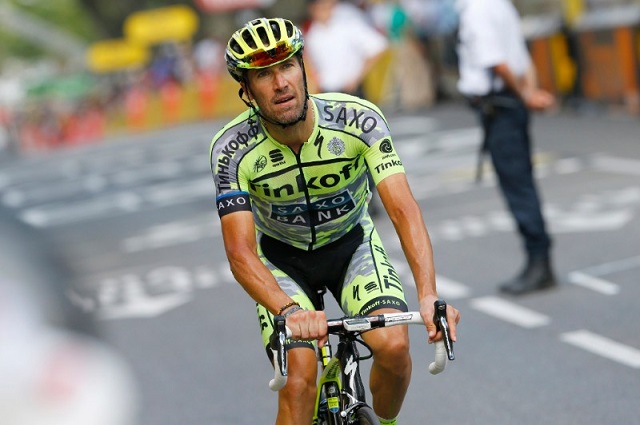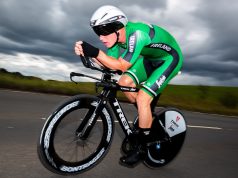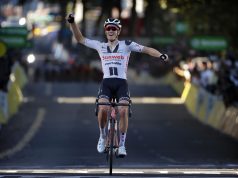Tinkoff-Saxo have announced the renewal of Matteo Tosatto’s contract for 2016. It will be the Italian rider’s sixth season with the team. He made his professional debut with the MG Maglificio-Technogym in 1997, and since then has also raced with the Ballan team, Fassa Bortolo andvQuick Step-Innergetic.
The Italian has completed 25 Grand Tours and amongst his biggest wins are a stage of the 2001 Giro d’Italia and a stage of the 2006 Tour de France.
“I’m, obviously, very happy to be with this team for another year. I was already thinking about continuing and after the Giro d’Italia I saw I was still at a very good level and I could be useful to the team in 2016,” Tosatto explained.
“I had a number of offers from other teams but staying with Tinkoff-Saxo was my priority. I wanted to continue being part of the group of one of the world’s best riders, Alberto Contador, and with Peter Sagan now crowned World Champion, I am convinced I made the right choice.”
He went on to explain what motivates him after nearly twenty years as a professional cyclist: “At this stage, motivation is mental. It’s my head that drives me and the goals and objectives I have. It’s extremely important to have clear goals in order to stay motivated.”
“If you don’t have this mental drive it will be very difficult to have the physical stamina to keep on riding. My goals might change every year but they keep me concentrated and willing to train, to live an athlete’s life and go to races in top form.”
“I could even say that in some occasions, in 2015 I felt better than 2014, especially at the Giro. I raced in top form and never felt worn out, even after the toughest stages. I raced in the Classics, the Giro and the Tour in very good shape, always pushing myself to stay motivated. One year more or one year less doesn’t make much of a difference physically, it’s your head that dictates your state.”
Tosatto also explained what he feels are the big differences in the sport since he first started. “There has been a huge change in professional cycling in the last 20 years, he said. “It requires much more sacrifices now and no matter what race you take part in, the peloton has a very high level of preparation.
“There has been a tremendous evolution as well in the technical aspects and there is an unprecedented attention even to the smallest details in materials, clothing down to sunglasses and helmets.”
“Twenty years ago going to a wind tunnel was unheard of, while now one of the first things you do early in the season is to find your optimal aero position on the bike by carrying out wind tunnel tests. The way we race as well has changed. In the past, riders had more freedom while now we follow a much stricter tactical plan and we are in constant contact with the sport directors, at least in the major races.”









